To date, there have been three compilations released by Capcom that primarily consist of fighting games. Street Fighter 30th Anniversary Collection featured just about every big 2D entry in the revered fighting game series prior to the fourth mainline game. Capcom Fighting Collection focused on some forgotten fan favorites like DarkStalkers, while also adding some rarities like Red Earth and gems like Super Gem Fighters Mini Mix. Marvel vs. Capcom Fighting Collection gathered the company's collaborations with the famed comic book publisher, including what some consider to be the holy grail with Marvel vs. Capcom 2. The fourth compilation, Capcom Fighting Collection 2, follows in the footsteps of the first entry by packaging together some of the more requested fighting games in Capcom's portfolio, and the result is as good as expected.
There are eight games in Capcom Fighting Collection 2. That may be two fewer than in the first Capcom Fighting Collection, but the lineup is still strong. It may come as a surprise that the first game is Capcom Fighting Evolution, a title that didn't exactly get a warm reception upon its initial release. Imagine Capcom trying to mash together several of its fighting games into one title, similar to what Sega did with Fighting Vipers and Virtua Fighter in Fighters Megamix. You have fighters representing Street Fighter, Street Fighter Alpha, Street Fighter III and Red Earth along with one new character, Ingrid, who was meant to debut in the canceled game, Capcom Fighting All-Stars.
The game goes for a semi-tag fighting system similar to Rival Schools, so you can't tag in the middle of a fight, but you can switch characters between rounds. The hook is that each fighter comes with the moves and super systems of their respective games. For example, Ryu represents Street Fighter and has the super system from Super Street Fighter II Turbo but cannot air block. Jedah from DarkStalkers has a three-level system where he can perform super moves and enhanced versions of their special moves.
Mechanically, the game is fine, and the idea of crossing over different fighting systems from different generations of different Capcom fighting games has merit, since it means that everyone feels more distinct while also making the game accessible to those who've mastered any of the represented games. One can argue that the presentation could've been better, since it looks like all of the older sprites and animations from each game were copied and pasted into the new package. The main complaint is with the roster. Not counting secret characters, there's only 21 fighters, which seems paltry when compared to Capcom's previous Vs. titles. When you consider the number of characters in each of the representative games, only having four represent each title is anemic. There's a real missed opportunity in not having some of the fighters, like Chun-Li and Zangief, come with variations that represent their appearances in the different titles.
Street Fighter Alpha 3 Upper is the next game, and its inclusion is questionable since the original arcade version of Street Fighter Alpha 3 already appeared in the Street Fighter 30th Anniversary Collection. This version comes with the additional characters introduced in the PlayStation and Dreamcast ports, so there are six new characters from the outset and three more as unlockables. There are no other changes to the game afterward, and the new characters added from the GBA and PSP iterations are also missing. It remains a fine game, but only if you don't already own the Street Fighter compilation from a few years ago.
Plasma Sword: Nightmare of Bilstein is the third game in the package and a rarity from Capcom in that it is a 3D fighting game instead of 2D. For the most part, it plays similarly to SoulCalibur in that you have a kick button and two different weapon-based attack buttons. You have no dedicated block button, but you have a dedicated sidestep button for dodging, so the newfound 3D space can be used. Unlike many 3D fighters of the time, this title has a few special moves and command inputs that mirror a traditional 2D fighter. Everyone has a special ability that traps both players in a more confined space and gives them special timed abilities, like infinite special moves and size changes. It's a good game and compares well to the other 3D fighters of the time, but players will have to get used to everyone being able to leap several screens high as if they were in a Marvel-related fighting game.
Project Justice is another 3D fighter that's well known enough that it became a pretty big cult hit in some circles. It's a little more traditional in terms of fighting systems with two strength levels for punches and kicks, and while you can dodge in 3D space, it also has the really high jumping seen in Plasma Sword. You can choose three characters to fight with, but your first pick is always your primary fighter. You can switch to the other two in between rounds, giving this a pseudo tag-team feel.
While the fighting is solid, everything else makes the game appealing for players of all types. After all, you're playing mostly as a bunch of high school students that range from American exchange students to those involved with baseball, photography, swimming or are simply high school punks. You can execute a triple team move where everyone in your party contributes to an extensive combo, but the more interesting moves come from simple tag team moves, which vary based on the participants. Some are basic, such as both fighters throwing simultaneous fireballs. Others are neat, such as someone using chiropractic techniques to recover your health. Some are funny, such as two fighters using their opponent as a pseudo volleyball. It's all a tad silly, but it works well to make the game fun and different from the rest of the lineup. People may not like that the default walking speed is so slow, so players need to rely on dashing.
The inclusion of these two titles is welcome, but it is odd to see that their predecessors aren't present. Star Gladiator wasn't released anywhere else outside of the arcades and the original PlayStation, and it would've been nice to see where Plasma Sword evolved from. The same is true for Rival Schools, the predecessor to Project Justice, but asking for the Japanese-only Nekketsu Seisyun Nikki 2 would've been a very big ask, considering that there was more emphasis on the school sim aspect, while the fighting only received a minor update. Despite the mechanical superiority of the sequels, having the previous games would've rounded out the package nicely.
For many players, the next four titles are the highlights and the reason to pick up the compilation. Power Stone is known more as a launch title for the Sega Dreamcast than as an arcade game, but it remains a game-changer. Compared to Project Justice, Power Stone is a fully 3D arena fighter where you can move anywhere without mimicking the fighting mechanics established by 2D games. The game uses a four-button scheme that works like Plasma Sword, but Power Stone emphasizes fighting via the environment as opposed to weapons in a fighter's possession. Depending on who you've selected, you can swing around a pole for a vaulted kick or grab the pole and use it as a bludgeon (if you're one of the stronger, heavier characters). Aside from the weapons and environments, the other major gimmick is the power stones. When collected, the power stones transform your character and temporarily grant them stronger projectile attacks and a super-powered special move that immediately restores you to a normal state. The only knock people may have against the game is with the small roster, but the game is still enjoyable after all these years.
If Power Stone is seen as a game-changer for Capcom fighting titles, then Power Stone 2 can be seen as the result of what happens when a fighting game embraces chaos. For some, this is the game that can be cited as inspiration for the likes of Gang Beasts, Party Animals, and The Grim Adventures of Billy & Mandy on consoles. The roster has been slightly expanded, so fights now consist of four players instead of two. The environments are bigger, multi-stage affairs. For example, you may fight on top of an airship, but the ship disintegrates, and everyone falls from the sky. You'll plummet to the front gate of a castle, where you'll keep fighting, and that's just one battleground. Every environment also contains loads of weapons and dangers to the point that the power stones can't really change the tide of any battle compared to something like a bevy of turret fire. Strangely enough, the varied battlefields and large random weapon selection do a great deal to balance the game, so almost everyone has an equal chance of winning. The game also features a deeper adventure mode, so you can start crafting new items if you can find the shop. This is more reason to play solo in order to make versus games more varied. Of all the games in the collection, Power Stone is perhaps the most accessible to anyone, and it's a huge reason that the game is still loved today.
Capcom Vs. SNK Pro is up next, and it is monumental for bringing together the rosters of the two biggest fighting games of the time: Street Fighter and The King of Fighters. The roster blends well with one another, so everyone feels like an equal match and no side feels weaker than the other. The game mechanics feel like a mashup of both series. The gameplay uses a four-button system that'll be familiar to SNK fans, but you can choose between a Capcom groove that mimics the special meter style and mechanics of Street Fighter Alpha or the SNK groove, which uses The King of Fighters as its super meter blueprint. All of this works fine to deliver a very enjoyable fighting game, and the stage introductions are still amazing to behold. It's also surprising to see that no one bothered to imitate the introductions after this title.
The major mechanical standout is the ratio system. By default, all of the fighters are given a number between one and four, with one being the lowest. You form a team of these fighters, with a ratio point total of four. The system isn't strict in that you're free to put up a team of two ratio two characters against one ratio four character, but it means that you'll need some strong knowledge of your fighters alongside a mind for strategy for each fight. It may look like a team of four ratio one characters can overwhelm a two-person team of one ratio one fighter and one ratio three fighter, but that ratio three character will hit harder and be the equivalent of a mid-level boss for everyone else. The system is intriguing and awesome, but the only complaint is that the rankings are rigid. If you're a big fan of Sakura, you'll have to live with the fact that the likes of her and Benimaru need to work harder to beat someone like Terry or Ken, compared to how things would play out in their original respective games.
As mentioned before, Capcom Vs. SNK 2 is perhaps the game that people are looking to the most, as it represents a refinement of what was introduced in Capcom Vs. SNK. Matches play out in a King of Fighters style, where you have up to three fighters per side, and beating one opponent means bringing out the next fighter in the lineup. The surviving fighter gets a small health boost at the start of the round. The ratio system makes a return, but now you can designate which fighter in the team gets the more powerful "two" rank versus the default "one" rank. The game opts for the Capcom six-button format instead of the SNK four-button format, but the six different grooves provide a ton of flexibility in how the special meter will behave, and it's based on what was created for the older Capcom or SNK fighters of the time. The system is deep, and the roster is more varied, with cameos from Samurai Shodown, Rival Schools and The Last Blade. Just like Marvel Vs. Capcom 2 from the Marvel collection, this is a near-timeless fighting game and a crown jewel of the collection.
As in previous fighting game compilations, Capcom Fighting Collection 2 has plenty of options for hardcore fans. You can choose between the North American and Japanese versions of all of the included games, but the only change is with game names and some character names. Most of the games have alternate soundtracks, but most players will stick with the original soundtracks. Secret characters can be unlocked from the very beginning, and both of the Capcom Vs. SNK titles can change the fighting setup. For the first game, that means going for the default ratio system or a standard 2v2 match. For the second game, you either go for a ratio match, 1v1 or 3v3 matches.
There are two new things in the game options that make this compilation more compelling. The first is the presence of a dedicated versus mode, which finally lets both players select new fighters at the start of every bout. The method is a touch clunky, since you have to select the Rematch option first, and that's the opposite of what you'd do in other fighting games, where the Rematch option simply lets you go to another fight with the same previous lineup. Still, the option is a godsend, and this is especially true for Capcom Vs. SNK Pro, since it means that you have a free ratio system. This means that you can create a 4v4 match if you want with any character or do things like buff up a ratio "one" fighter into a ratio "four" character, giving the game even more depth.
The second new option lets you change the internal resolution scale, so you can go from the original to a 2x, 3x, or even 4x resolution separate from the display resolution. This doesn't affect anything rendered with sprites, so characters don't magically become as detailed as in an Arc System Works game, and the option is unavailable in Street Fighter Alpha 3 Upper. It also doesn't magically clean up textures to make things less blurry. However, this affects anything rendered in polygons. The HUD is sharper in Capcom Fighting Evolution, while the backgrounds in both Capcom Vs. SNK titles look loads cleaner. You'll really see the benefit in the fully 3D titles, as the jagged edges in those games are practically gone, making those titles look slightly more modern compared to the original incarnations.
When it comes to online play, there isn't much to worry about. Like the previous games, Capcom Fighting Collection 2 employs rollback netcode, and the performance holds up. It feels exactly like a local versus game, with no dropped frames or missing inputs or weird behavior. Granted, the pool of players during a review period won't match what the game will have once it goes live to the public, but the overall performance was quite solid in the matches that we played. Searching for a match is painless, as you can filter your search among the pool of games instead of seeking out a match on a per-game basis. You can also browse the game's museum or play offline versus the CPU until a match is found. Setting up a lobby might seem limited because creating one for all games defaults you to the Japanese versions, but that can be changed once you're all set up. You'll want to be mindful of the general volume settings, as you can set individual volume levels per game if you didn't configure the general sound levels beforehand, unless you find large volume fluctuations within the game. The only knock is a lack of cross-play support, as that will affect the player pool, but other than that, the overall online experience is rather pleasant.
Steam Deck users will be pleased to learn that this release doesn't mess with compatibility for the device. The game runs at 1280x720 despite what the settings say, but the game still looks good when displaying the sprite-based and polygon-based elements. The frame rate never drops, which is expected when dealing with games this old, and the title supports cloud saves, which is good if you're trying to go for all of the game achievements on the go. As for battery life, you'll get about four hours on a full charge on the LCD version of the Deck, but it'll drop to about three hours if playing a 3D fighter. All in all, the experience is good.
Capcom Fighting Collection 2 is an easy recommendation for any fighting game fan. Even though Capcom Fighting Evolution isn't that great, the rest of the lineup ranges from solid to stone cold classics. The online performance is quite good, and each individual game is deep enough that they'll keep anyone busy for a long time. Unless you only like a specific type of fighting game or dislike Capcom's output, Capcom Fighting Collection 2 is a must-have title.
Score: 8.5/10
More articles about Capcom Fighting Collection 2


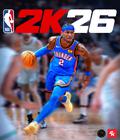
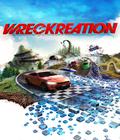

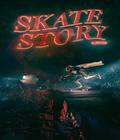
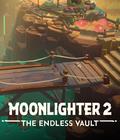

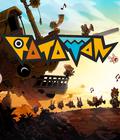
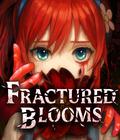

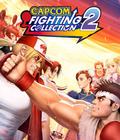 Combining classics like Capcom vs. SNK 2: Mark of the Millennium 2001 and Power Stone 2 in one knockout package, Capcom Fighting Collection 2 comes chock-full of new features including online play and quality-of-life updates across all eight games!
Combining classics like Capcom vs. SNK 2: Mark of the Millennium 2001 and Power Stone 2 in one knockout package, Capcom Fighting Collection 2 comes chock-full of new features including online play and quality-of-life updates across all eight games!















































